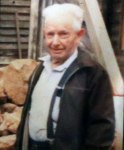Shipbuilding at Britannia Shipyard
The Britannia Shipyard was designated a National Historic Site in 1991 by the National Historic Sites and Monuments Board of Canada. The 3.3-hectare park is located along the Steveston Channel of the Fraser River in Steveston Village. The Britannia Shipyard was constructed as a cannery in 1890, a function it retained until 1918, after which it was adapted for use as a boat repair yard until 1980.
The Blacksmith Shop
The most skilled of all blacksmiths were those who shape iron and steel to the precise and intricate needs of ships. Britannia’s blacksmiths and welders forged iron, machine steel and tool feel for the shipyard from 1918 to 1979. The shop was complete with a hot forge, anvil, vice, and a variety of tools that were made and used by the blacksmith himself. Common hand tools were hammers, tongs, swages, jigs, punches, drifts, scroll wrenches, hot setts and chisels of varying sizes depending on the need.
The Carpentry Shop
Closest to the boat ways, the carpentry shop was the centre of the wood working facilities. Wood was cut to size and shape, then fitted to the vessels by Britannia’s carpenters and shipwrights. Each year, the men repaired and maintained the ABC Packing Company’s fleet for the coming fishing season. Although this was a busy shop, powered equipment was basic, consisting of a table saw, band saw and planer. Each carpenter had his own handmade tool box filled with his personal tools. The tools were often handmade from materials such as iron, steel, wood, bone and antler.
The Engine Shop
Britannia employed several mechanics who repaired engines belonging to the ABC Packing Company fleet, as well as many privately owned vessels. The Britannia shop employed a mechanic foreman above a crew of mechanics and apprentices. It was a busy shop year-round, with considerable volume in the spring as boats awaited repairs for the coming fishing season. The engine shop was the central area and had direct access to the dock. For major repairs, engines were removed from the boats, repaired in the engine shop and then reinstalled. The mechanics often did minor repairs and maintenance without removing the engine. The engine shop was filled with work benches and tools that the mechanics required to get their work done.
The first engine used on boats was developed in 1902 by an American company, Frisby & Hyannis. The first practical outboard motor was introduced in 1906 by Ole Evinrude. In 1907, the Easthope family developed a two cycle engine that they sold out of Vancouver. Eleven years later, Easthope Marine Engines introduced a four cycle engine called the “Heavy Duty Marine Engine,” which became quite popular and sold for $150 to $175. Engines were a tremendous improvement that dramatically changed the fishing industry. A fisherman no longer needed to row or sail his boat. Engines allowed boat builders to construct larger vessels, which were sturdier and could travel further distances.
Wooden Vessels
Wooden vessels were both built and maintained onsite by Britannia’s shipwrights and carpenters. Although the majority of boats built and repaired at the shipyard were owned by ABC Packing Company, work was also done on privately owned vessels. In the Britannia Shipyard, there was a leading shipwright, a head shipwright, a ship’s husband, shipwrights, a carpenter foreman and carpenters. This crew repaired numerous vessels with the help of mechanics, welders, painters and stockmen.
Boat Repairs
From 1918 to 1979, Britannia Shipyard employees maintained and repaired boats belonging to the ABC Packing Company. The carpentry, engine and machine shops were busy places. There were always boats waiting to be repaired for the coming fishing season. Shown below is a partial list of repaired boats derived from Britannia ledgers from the years: 1947-49, 1955-59, and 1960-67.
|
Annandale |
Getty |
Kinkasan A. |
Parthenon |
Recollections
 Buster McKenzie
Buster McKenzie
Manager 1947 to 1973
“I’d park my car beside the office and never took the keys out. Some fishermen would come along and wanted to go down to Steveston for something. I’d say, ‘Well take my car the keys are in it.’ Twenty years of it there, I never took the keys out.”
 Allen Steves
Allen Steves
Leading Shipwright 1959 to 1974
“The Japanese must have come back, some of them, because we built some boats for Japanese afterwards, after the war. They put a real good spread on when they launched the boat, they would buy quite a bit of liquor. I remember one Japanese, he gave every one of the boys that worked there a case of beer to take home.”



